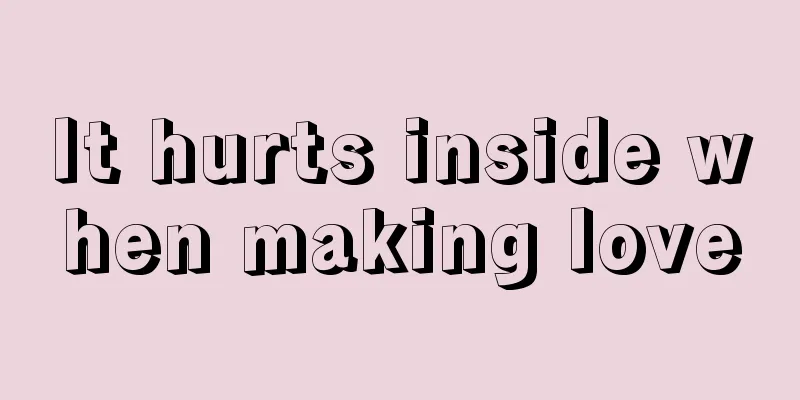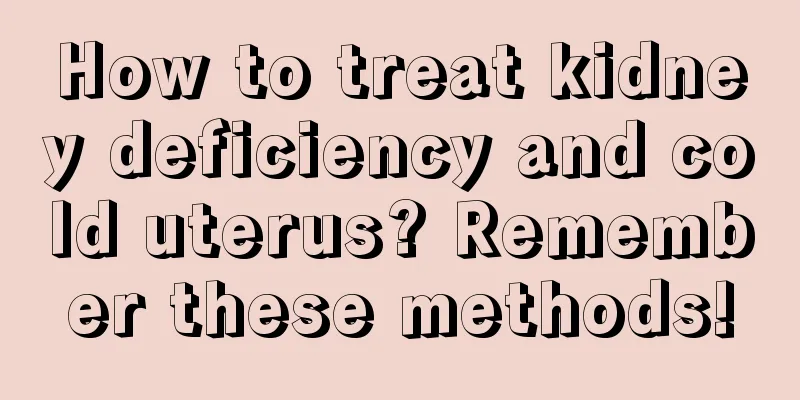Does intrauterine adhesion require surgery? What other treatments are there?

|
Women with uterine adhesions need to seek timely treatment, otherwise it will cause serious damage to the endometrium of the uterus. In addition to surgical treatment, traditional Chinese medicine can also be used for treatment, but traditional Chinese medicine treatment is relatively slow. Intrauterine adhesions are related to pregnancy in about 91% of cases, and are common after artificial abortion or spontaneous abortion curettage. Any factor that causes endometrial destruction can cause intrauterine adhesions. and postpartum hemorrhage after curettage. Because the pregnant uterine wall is relatively soft, it is difficult to control the depth during curettage, or the uterine cavity is excessively scratched, the negative pressure is too high during suction, and the time is too long. The basal layer of the endometrium is scraped off, resulting in postoperative intrauterine adhesions. The suction head and scraper repeatedly enter and exit the cervical os, and irregular dilation of the cervix can aggravate the injury and increase the chance of postoperative intrauterine adhesions. Intrauterine adhesions caused by non-pregnancy account for about 9%, such as endometrial tuberculosis, myomectomy, diagnostic curettage, etc. Patients with intrauterine adhesion syndrome generally have a history of uterine cavity operations, such as artificial abortion, curettage, myomectomy, and even after full-term delivery or mid-term induced labor. It is more common after artificial abortion and repeated curettage. Due to excessive trauma to the endometrium and myometrium, especially in the case of concurrent infection, adhesions occur in the uterine cavity or cervical canal. According to the location, degree and area of adhesion. The clinical manifestations of intrauterine adhesions are various, such as amenorrhea, oligomenorrhea, dysmenorrhea, recurrent miscarriage and infertility. The diagnosis is based on medical history, uterine probe test, uterine iodized oil angiography and hysteroscopy. Common treatments for intrauterine adhesions include hysteroscopic separation and traditional Chinese medicine treatment. Hysteroscopic separation is a minimally invasive surgery with little damage to the body and quick recovery, but there are more complications after the operation and it is easy to re-adhesion. Traditional Chinese medicine treatment uses the four methods of observation, auscultation, questioning and palpation to distinguish the patient's yin and yang, exterior and interior, cold and heat, deficiency and excess. Different patients with different conditions can be flexibly prescribed. It can improve the repair of uterine wall scar tissue, fibrosis, and the loosening of adhesion tissue, increase tissue tolerance, and repair damaged endometrium, greatly increasing the chance of pregnancy with few side effects. However, traditional Chinese medicine treatment takes a long time, and it is difficult to find a Chinese medicine practitioner who is good at treating this condition. |
<<: What should I pay attention to when I am pregnant with a saddle uterus?
>>: What are the symptoms and how to treat uterine stromal sarcoma
Recommend
The efficacy of Panax notoginseng, Angelica dahurica and Poria cocos mask is a must-read for women!
Panax notoginseng, Angelica dahurica and Poria co...
What should I do if I have excessive vaginal discharge due to vaginitis?
Vaginitis is a very common gynecological disease....
Why do car sellers not recommend full payment? Why do 4S stores recommend loans?
Generally, when you go to a 4S store to buy a car...
How many years does menopausal menstrual disorders last?
Almost everyone feels that many middle-aged and e...
Symptoms of lobular breast hyperplasia
Breasts and mammary glands have a great impact on...
How much damage does uterine curettage do to the uterus?
Abortion is a way of terminating pregnancy that w...
The blood pressure measured on the left and right arms is different. Which one should be used as the standard?
There are several common questions about blood pr...
Is it normal to have no reaction in 2 months of pregnancy?
Many people are first-time mothers and don’t know...
What to do if your belly gets bigger during pregnancy
If you feel your belly is big three months pregna...
Protect the health of the elderly and beware of aspiration
As the aging society accelerates, the health prob...
The process of inducing labor by taking medicine for three months
Nowadays, many young people experience unexpected...
Only a little brown color during menstruation
Brown menstruation is a relatively abnormal situa...
How to calculate the salary of pregnant women during maternity leave
I believe that many female friends nowadays are u...
Daily tips for breast enhancement
Women are born to love beauty, so while being bea...
What to do if you have severe vomiting during pregnancy
People will feel very nervous when they just beco...









